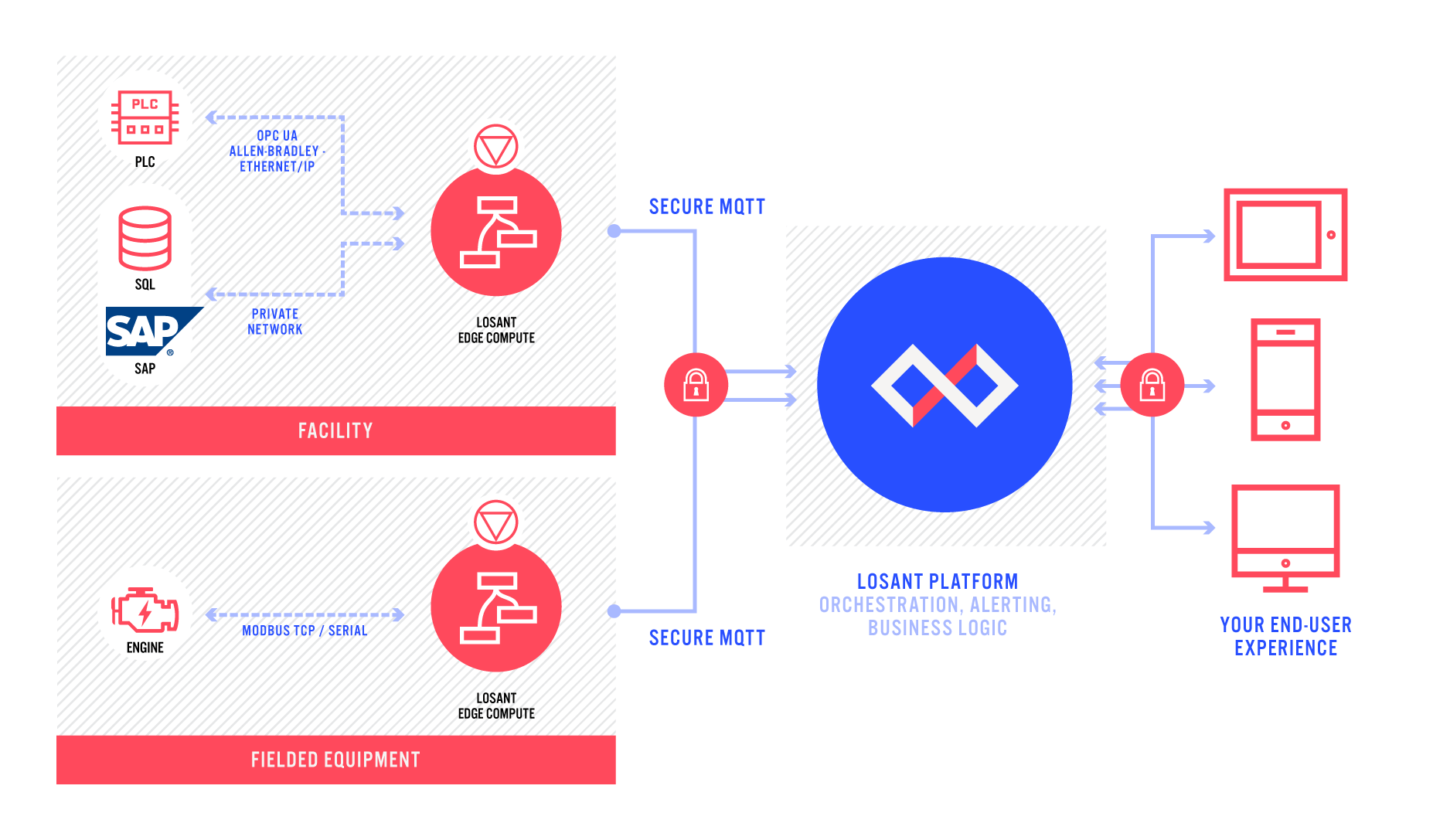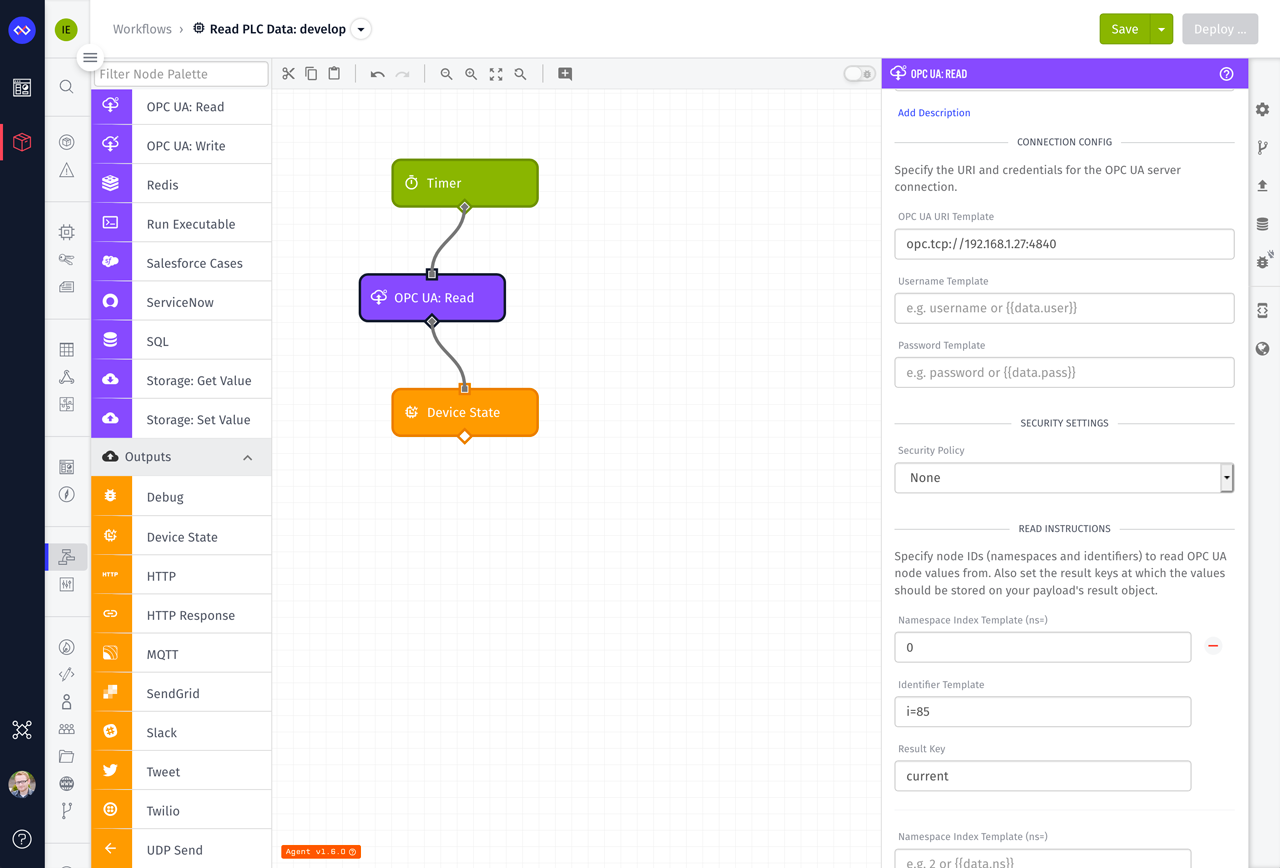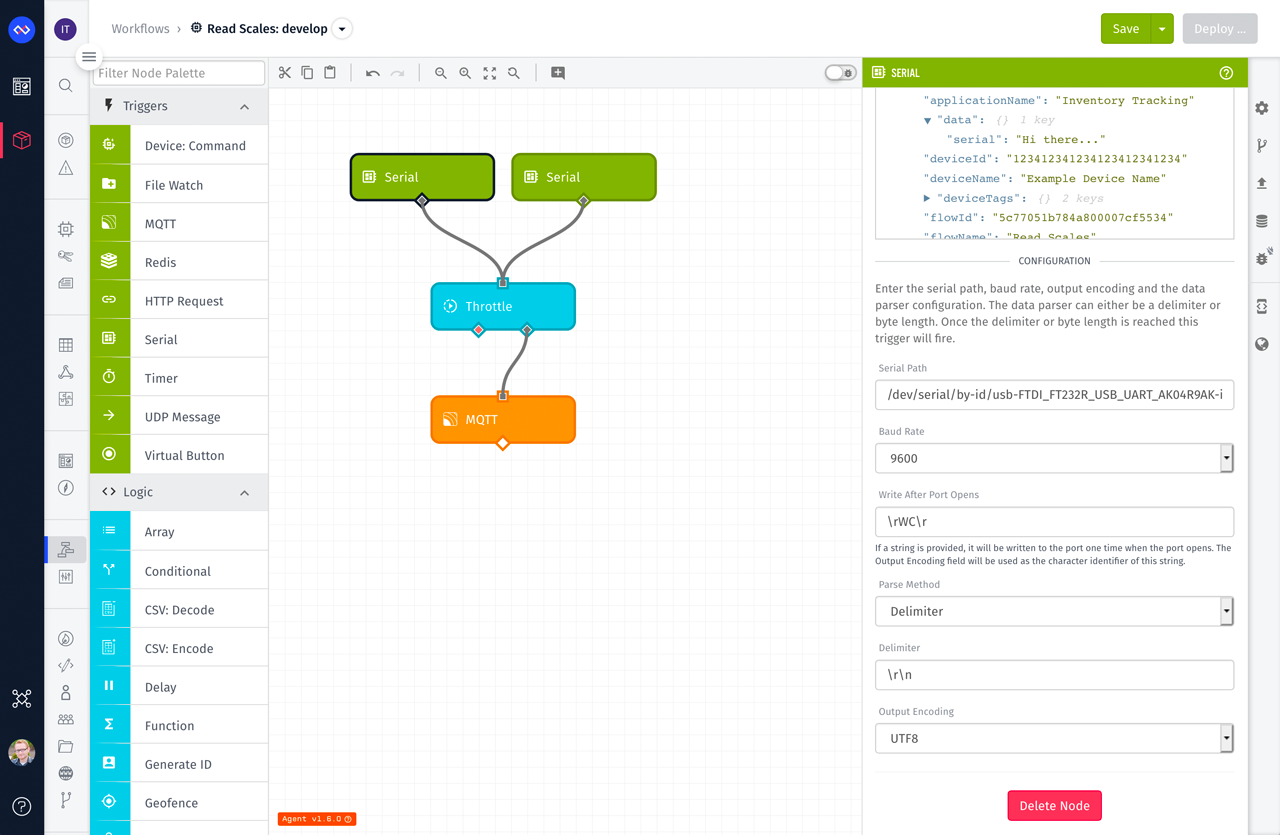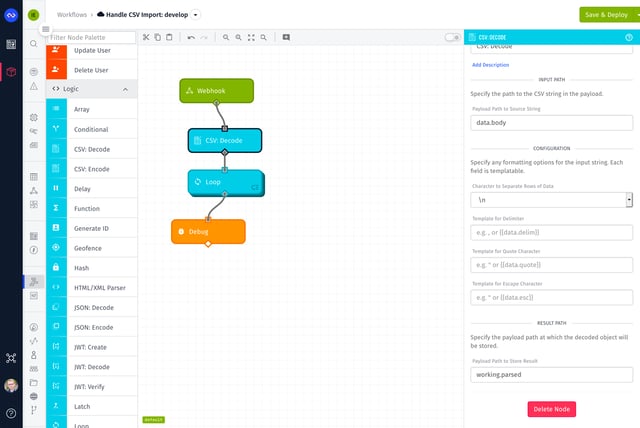Today's update brings a total of six new nodes to extend the capability of your Edge, Application, and Experience Workflows. The OPC UA Read, Write, and Browse Nodes make it easy to collect data from and remotely control a broad set of existing industrial equipment and PLCs. The Serial Trigger provides a quick way to ingest data from your local peripherals over a serial interface. Lastly, the CSV: Encode and CSV: Decode Nodes provides an easy way to process data in CSV format.
Our Edge Compute functionality was launched a while ago and has always been designed to securely bridge the gap between your local environment and the cloud. As part of that, making it as easy as possible to interface with a wide variety of equipment and local services has always been a primary goal. Today's release of the OPC UA and serial adapters are a major part of that overarching goal.

OPC UA Read, Write, and Browse
Based on your feedback, supporting OPC Unified Architecture (OPC UA) was something that we should definitely add to our ever-growing list of available connectors.
Today's update adds three nodes to support OPC UA devices:
The OPC UA: Read Node makes it easy to tap into the valuable stream of data that exists within your equipment or PLCs. When you have hundreds or thousands of devices spanning multiple facilities and multiple geographic regions, being able to securely transmit, store, and visualize that data from Losant's central cloud platform provides a wealth of new data-driven insights and benefits to your organization.

The above workflow shows a simple, but common example of using an OPC UA: Read Node. This workflow fires periodically using a Timer Trigger. It then reads any number of values from the equipment and sends those to Losant using the Device State Node.
The OPC UA: Write Node allows you to write values back to your equipment, for full bi-directional communication between the edge and cloud. The OPC UA: Browse Node provides a way to query your devices for all of the available values that could be read or written. This provides a powerful tool to automatically discover and report new attributes as your equipment evolves.
Serial Trigger
Being able to read data from serial peripherals was another common request by our users. Prior to the adoption of network-based protocols like Modbus TCP and OPC UA, nearly every device supported a serial interface. Even today, serial is a common port provided by equipment manufacturers. The Serial Trigger makes it easy to connect to any of your gateway's serial interfaces and stream the data into an Edge Workflow.

The example above is connecting to two Loadstar Industrial Scales and reading their weight values for an inventory tracking solution. These scales are plugged into the gateway over USB using a USB-to-serial converter supplied by Loadstar. The Serial Trigger supports an optional string that can be written to the device once it's connected. In this example, we're writing "\rWC\r", which instructs the scale to "write continuous" and stream values continuously over the serial interface. Each time the scale prints a value, the trigger will fire. The raw data rate is about 70 messages per second each, so the Throttle Node is used to filter that high data rate prior to reporting to the cloud.
CSV Encode and Decode Nodes
Accepting data from existing sources is a big part of many complex IoT solutions. One of the most common formats to transfer data between systems is CSV. The CSV: Encode Node and CSV: Decode Node now make it easy to handle data in CSV format. A common use-case for this is to accept data from an existing system and import it into Losant for further application enablement. Many systems support some type of reporting functionality that can export CSV data every 24 hours or so. That export can now be directly piped to Losant for automatic parsing and ingestion.

What's Next?
With every new release, we really listen to your feedback. By combining your suggestions with our roadmap, we can continue to make the platform easy for you. Let us know what you think in the Losant Forums.
